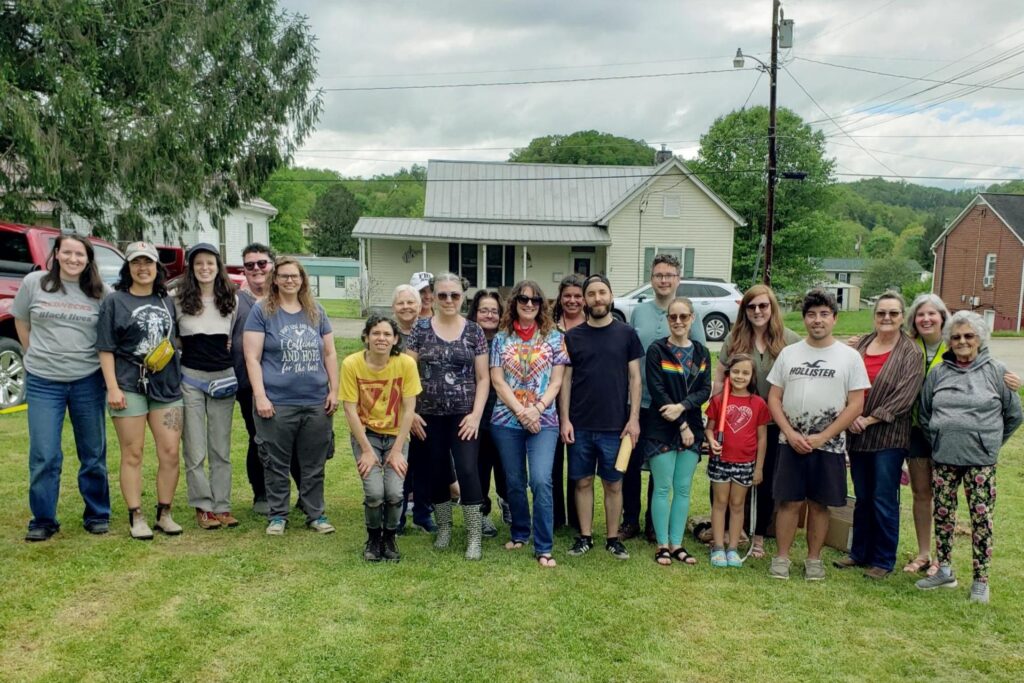BUCKHANNON – Community members are encouraged to keep their pets inside at night and remove any food around their house to help prevent coyote appearances.
Coyotes are this month’s subject for My Buckhannon’s ongoing ‘Creature Feature’ series, and West Virginia Wildlife Center biologist Trevor Moore said the facility currently houses two coyotes: one male and a female. They were both brought in by biologists as puppies, with the male having lived at the center since 2008.
“Typically, they’re solitary or usually in mated pair together, they typically don’t form packs, but you always have people talking about them roaming in packs, usually their little family groups,” Moore said. “They’re solitary for a bit, then they form a family group for a while, and then they’ll go back to being solitary or pairs.”
While they are usually solitary creatures, coyotes can be seen all over West Virginia.
“People can encounter coyotes all over because they are there, and they’re so well adapted,” Moore said. “They’re one of the few wild animals that can survive in urban environments – they’re very flexible, they’re very opportunistic. You’re going to see them out in the countryside of rural areas, but then you’re also going to be able to see them in urban settings, too, and that’s just because coyotes are very smart. They figured out humans provide a lot of easy opportunity for food through our trash and unfortunately, through some of our pets.”
While coyotes don’t want to be seen, they will make appearances at people’s homes if they find an easy food opportunity.
“Reduce food outside, try and clean up any trash that you have outside,” Moore said. “They’re very opportunistic feeders, so they’re primarily going to be carnivores, but they will eat dog and cat food very easily and readily. That’s what we feed ours at the center – dog food. It’s also important to make things difficult for them to get into, don’t have trash laying around, bring in pets at night unless you have a very large pet, larger than an average coyote which can be up to 45 pounds.”
If a person does see a coyote, don’t approach it, especially if it appears to be acting strange.
“If it’s being overly aggressive, if it’s acting drunk and staggered around or anything like that, if it looks mangy, if it looks dirty and gross, do not approach it because that could be indicators of rabies – especially the aggressive and the drunken movements,” Moore said.
Coyotes are so prolific, it’s possible for them to live near a home and the residents may not know.
“Coyotes are a predator, but they’re not one of those top-tier predators; they have things that eat them, so they’re going to be wary of animals that are bigger and they’re very, very much like foxes where they’re very elusive,” Moore said. “Lots of times, you’ll probably have coyotes around and you’re not going to know it unless you find some feces or if you happen to see one just starting to go into the bush or something.”
A person is more likely to see coyotes in the spring when mated pairs start to have puppies.
“They’re going to be out looking for food, and there’s just more of them around, they’re forming bigger groups, so you’re more likely to see them then,” Moore said. “You might also see them during the wintertime more because they are probably scavenging a little bit more.”
Moore said they are so abundant that they are not worried about their population dropping at all.
“The population is very healthy,” he noted. “Since they are so good at adapting, especially to humans, there’s not a lot of concern there about the coyote population.”














